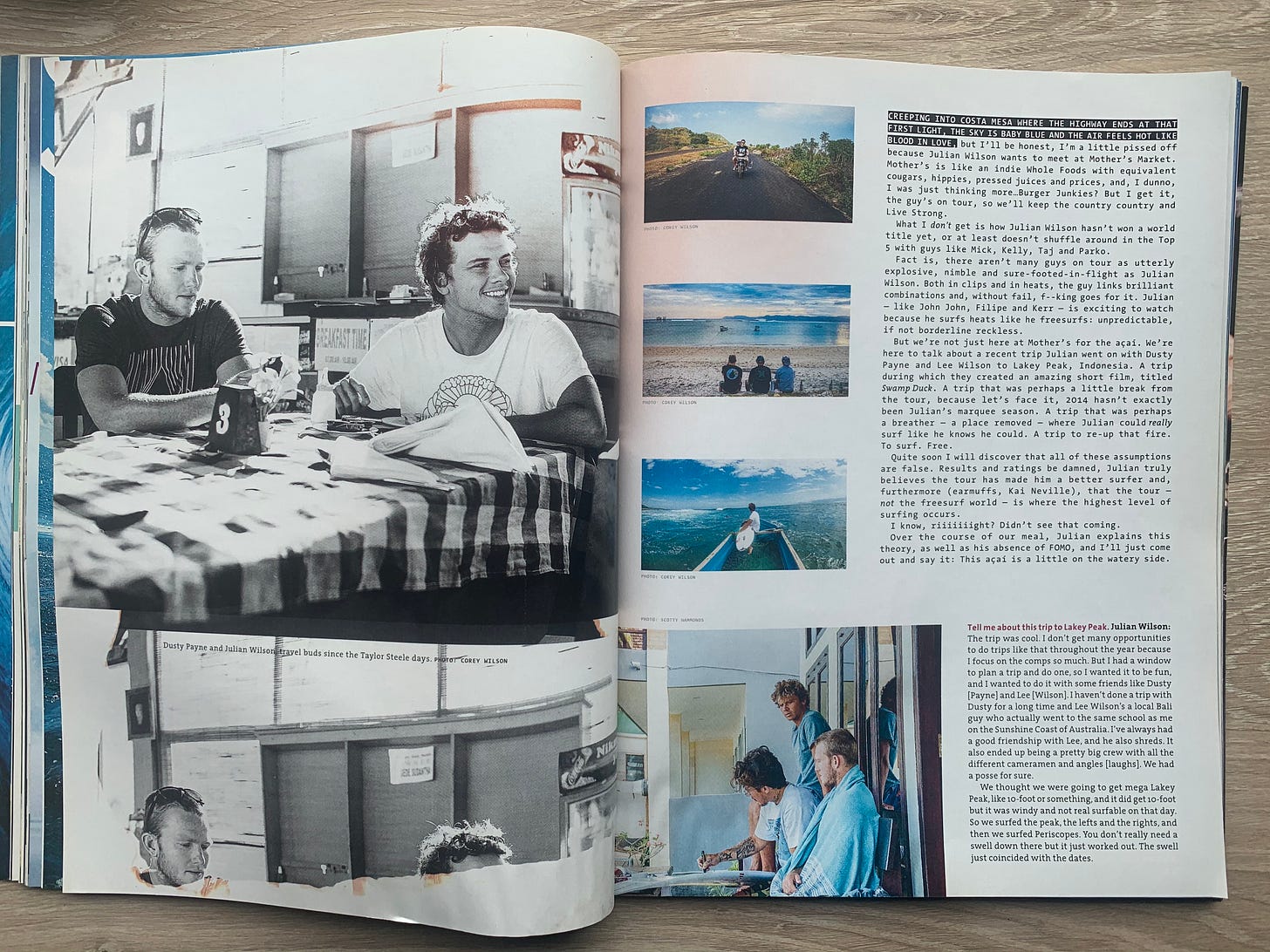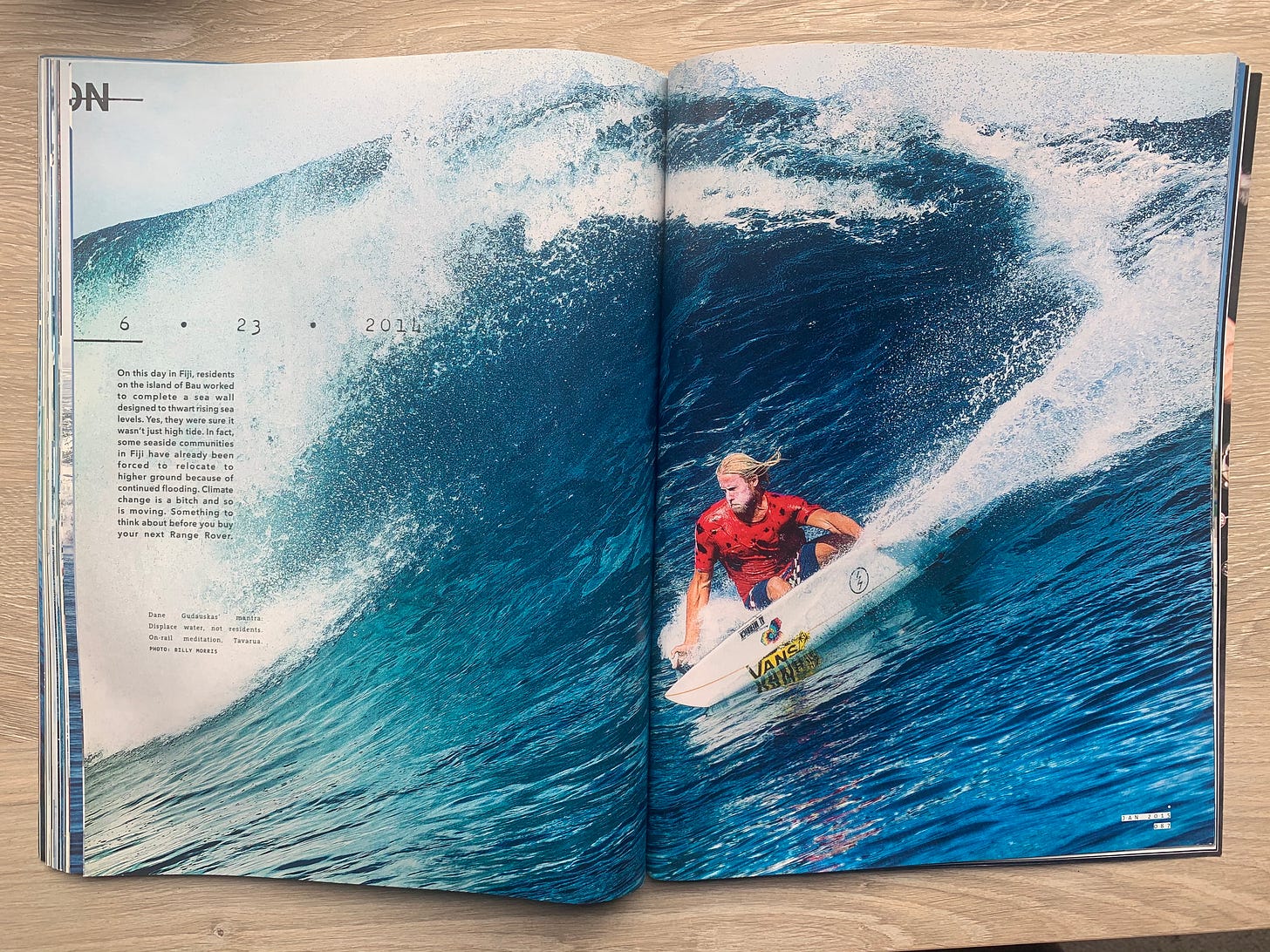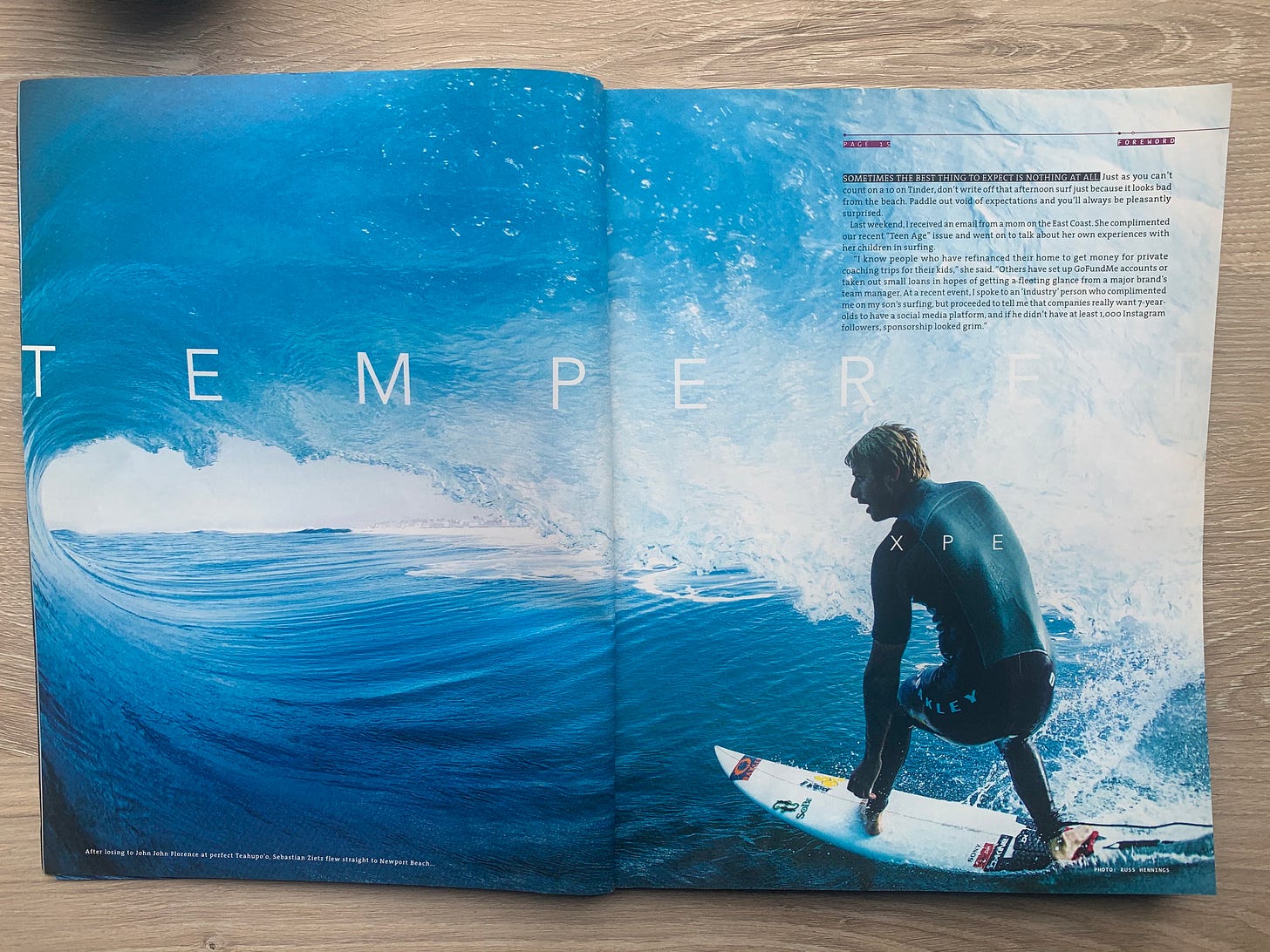Does the best surfing happen on the world tour or off it? With numbers on the back, or sans jersey? It’s a question that no doubt had been echoing off the walls in the Surfing office prior to this issue. Do more jaw-dropping moments happen in the crucible of competition or the land of unbridled creativity? Depending on who you ask, the answer either matters a lot or not at all.
Maybe 10 years ago when the internet was just beginning to oversaturate our minds with content I would have nodded along and said yes, of course the world’s best are the best in the world. But to say unequivocally that the best surfing takes place in 30-40 minute increments misses the larger picture and cuts out a massive component of surf culture.
Have you seen what Nathan Fletcher is doing at age 46? Or what Torren Martyn is capable of on a twinnie? How about the progress Erin Brooks is making? Or whatever happens when Mason Ho touches a board? To be fair, I see what Surfing was going for here, this is purely for the high-performance, thruster-oriented staring and narrow demo.
Much to the surprise of Surfing’s editors, Wilson affirmed that in his mind, the best surfing on a thruster happens on the World Championship Tour. During heats. Not between happy hours. When scores and titles are on the line, crazy things happen. He defines a distinction most surfers probably can’t relate to: He dials back his surfing in freesurfs to make sure he’s healthy for his heats. Which is interesting, because judging by some of his latest edits, you wouldn’t think that’s the case.
How many surfers wind up going through the motions of surfing, never trying anything new, waiting for the waves to dictate their heart rate and stoke levels. Wilson sees surfing through different lenses. He’s a top-10 surfer on tour who loves to longboard with his dad, perform mind-boggling maneuvers in his spare time, and then replicates them in a contest.
On a related note, it’s bittersweet to hear Wilson say last month he’ll be away “indefinitely” from the tour. He’s been a perennial upper-echelon surfer, versatile enough winning events like Tahiti and Snapper. He’s been at it for 10 years, and with a young family to raise right now, it’s good to see him recognize his priorities.
One could argue some elite male surfers not on a competitive circuit like Chippa, Dane or Craig are on the podium in their own right. But I think Wilson’s stance holds more truth for women’s surfing. The tour has never been more competitive. Because the market for female freesurfers hasn’t branched out as the men have, most of the top talent is funneled towards the tour. Sure, Carissa Moore and Stephanie Gilmore are still the top dogs, but women like Caroline Marks and Amuro Tsuzuki are rapidly rising through the ranks.
Quotable:
“In a situation where you’re in the air, 6 feet above the lip, you have time to think about whether you want to land or not [while freesurfing]. But with a jersey on you’re not thinking about it for a second. You have to land it. And that’s why you see the bar raised in a jersey.” — Julian Wilson
Notable:
“The United States of Newport”
I associate Newport Beach with two things: The Wedge and a specific McLaren dealership. Oh, and Hurricane Marie, which slammed southwest swell into those expensive sandbars in August 2014. Leo Maxam tours the peninsula for a full day a night. Many surf towns in California are wealthy, but Newport seems extravagant. In between dodging yachts and Ferraris, meeting professional surfers like Chase Wilson and Andrew Doheny, electrician and Wedge enthusiast Bobby Ovkist and longtime business owners like Jeff “Yoki” Yokoyama of Maui & Sons. It turns out entrepreneurs are nothing new in Newport’s surf scene: Quiksilver and Volcom both trace roots here. Maxam described an odd mix of personalities, one-percenters rubbing shoulders with starving artists. Imagine the conversations in that lineup.












